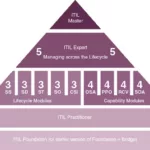If you’re starting a business, or even just involved with one, chances are you’ll need to brush up on your marketing skills. No business can succeed without getting the word out, and doing so effectively involves a lot of strategic decisions. The specific nature of these decisions will depend largely upon what kind of business you’re involved with and what resources you have at your disposal. But in this post we’re going to look more broadly at the idea of direct response marketing, which is a style of advertisement that anyone involved with growing a business ought to be familiar with.
What Is Direct Response Marketing?
It’s a little bit tricky to define direct response marketing without first considering other types of advertising – and specifically brand exposure. This process, often referred to simply as “branding,” is about getting your name out there in the most literal sense. It revolves around making sure potential customers read your name and hear about the products or services you provide as frequently as possible.
Direct response marketing is a little bit less common, but more specific, and sometimes easier to deal with. The idea is to do a better job of explaining your business, rather than merely promoting it, and to elicit a “direct response” by doing so. In direct response marketing, your job is to target a given audience and make offers or pitches that explain how your company can help that audience. Another feature of direct marketing tends to be that it’s easier to trace than mass branding. The ideal setup allows you to understand which ads worked for which customers, and to act accordingly.
How Is It Done?
There is no one way to go about a direct response marketing campaign, just as there is no single way to execute branding. However, if you’re thinking through the idea of targeting a specific audience and explaining how your business can solve a problem, you might be realizing that this requires more time and/or content than non-specific branding exercises.
It’s largely for this reason that radio advertising is often tied to the direct response strategy, as it’s one of the few media with built-in tracking to measure the long-term ROI of your marketing dollar. With even 15 or 20 seconds of airtime, someone reading a radio ad can pose a quick question relating to a common problem, and then make an offer about what a company can do to help.
It’s something you can’t always accomplish with, say, an online advertisement or a mail slip. And while radio advertising might sound a little bit outdated, it’s actually still a very busy business – not to mention the rise of podcasts has brought about a similarly useful medium. Another advantage of direct response radio marketing is its accountability.
Is It Just About Sales?
An easy misconception about direct response marketing would be to assume it’s just about making a sale or two. But this couldn’t be further from the truth, and for that matter most any marketing strategy should be about more than earning a sale. In fact, direct response marketing is about building a community around your business as much as it is getting sales.
As one article put it, one of the perks of direct response marketing is that it allows you to cultivate a House List, which is basically another way of describing a community of regular, loyal customers. If you track your marketing efforts you should be able to figure out who your “window shoppers” are, as well as what might turn them into actual paying customers. But you should still go one step further, and figure out how to get them interested in staying attached to your business, through mailing lists, app notifications, or whatever else you may have at your disposal.
That wraps up a general overview of a strategy that’s often more effective than people realize. It’s not easy to master or execute overnight, but if you’re in charge of helping to grow a business, you should consider learning more about it.








